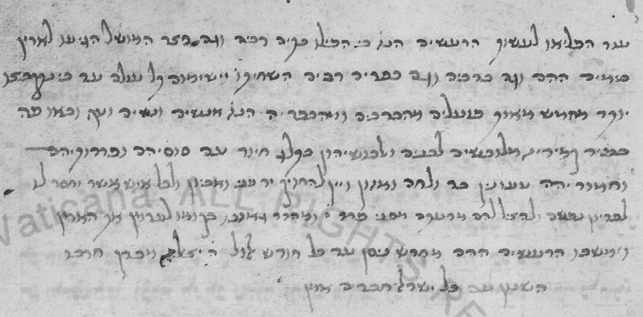Some books are truly full of surprises. Paolo Galli, an Italian researcher looking at records of historic earthquakes that happened in the country, discovered by chance a note written on the leaf of a 15th-century Hebrew prayer book. The note offers a glimpse of a previously unknown earthquake that affected the central Italian region of Marche.

While records of earthquakes in Italy are considered to be among the most historically complete, for periods before the Modern era they have gaps, often concentrated in a few limited regions. For example, Marche, in the central Apennines, lacked any seismic observations throughout the entire fifteenth century.
“The wealth of historical sources in Italy is undoubtedly one of the richest, but it is equally subject to gaps both in terms of time and in places,” Galli said in a press release. The production of documentation related to earthquakes was poorer in the Papal States, of which the Marche Region was a part in the 15th century, he added.
The note was copied in the Marche town of Camerino and completed in September-October 1446. It only has eight lines, in which it describes an earthquake around Camerino that took down houses, damaged the governor’s courtyard, and destroyed cities and villages, which had “become a mound of stone” and largely altered life in the town.
Men and women “come here in Camerino dressed in white pale dresses with their horses and mules and donkeys loaded with bread and food and wine, in order to hold the hand of the poor,” the note reads. Galli believes that the town experienced intense shaking, measuring an eight (out of 12) on the Mercalli-Cancani-Sieberg intensity scale.
Valuable evidence
The note is the main piece of evidence of an earthquake in the Marche region in the 15th century, Galli said. Researchers had previously found a 1446 petition asking for funds to restore the city walls and castle in Petrino, a settlement 20 kilometers from Camerino, which also indicates a damaging earthquake that happened in the region.
There are about 450 documented earthquake site observations from Italy from the 15th century and half of those come from a historic earthquake sequence in 1456 in the south-central Apennines. Galli had been looking through the library’s manuscripts from the Middle Ages to find more information when he stumbled upon the prayer book.
The earthquakes of 1456 are remembered as some of the strongest in the history of Italy, affecting five regions of the country and killing over 30 people. The shock was long, intense and sequential, based on historical chronicles. However, accurate information about the earthquakes is still lacking, as Galli explained in the study.
“Despite the abundance of historical sources, particularly a specific treatise on the earthquake written by the humanist Giannozzo Manetti, we still do not have certainties about the different epicentral areas and, therefore, the parameters of individual mainshocks—magnitude and epicenter—and their seismic sources,” Galli added.
The study was published in the journal Seismological Research Letters.






